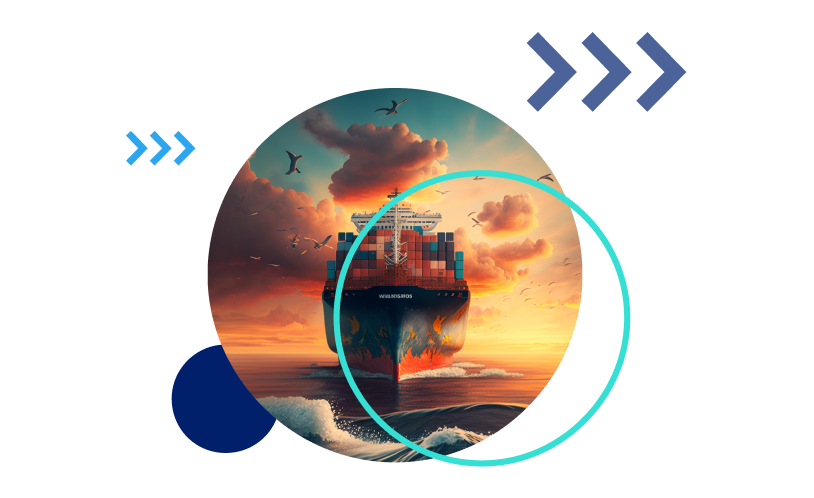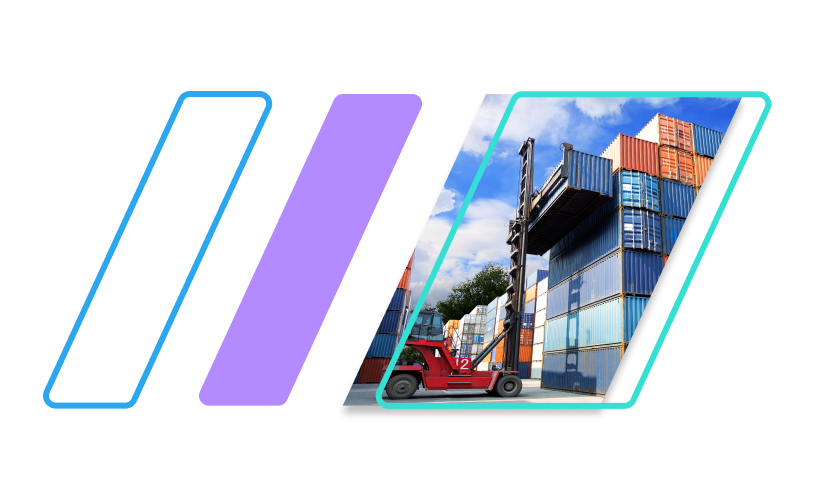Part of every interview for new techie hires (i.e., non-logistics professionals) at Freightos involves explaining the lay of the land – carriers (mostly) sell to forwarders, forwarders (mostly) sell to shippers. And every single one asks the same question – why don’t carriers sell exclusively to shippers?
We hear it a lot.
So after our inaugural Freight in the Future episode with Eric Johnson, Senior Tech Editor at JOC, we took this question to the source.
Dr. Ralf Belusa, the Chief Digital Officer at Hapag-Lloyd, one of the world’s largest ocean liners, expanded on how digital technology is being leveraged by one of ocean freight’s major players, direct to shipper sales and more.
Here are some of the highlights if you didn’t catch us live.
How do you spur innovation at a large organization?
Hapag-Lloyd had been at the forefront of introducing digital tools – from instant quoting and digital customs services to track and trace and now space guarantees. Here we explore how they’ve been able to identify, develop and introduce these new offerings.
According to Ralf, it starts with implementing a basic structure such as an agile framework, and then training all the relevant teams (IT, sales, customer service, marketing etc.) to collaborate through this methodology.
This can’t happen in a vacuum. It’s crucial that the innovation team is really an integrated part of the organization.
Ralf was a shipping outsider, having spent time in everything from the automotive industry to eCommerce, and explained that a mix of shipping lifers and techies is one of the keys to successful digitization in freight.
Innovation needs to come from both sides. A connected, integrated team with a culture of open collaboration is essential to its success.
And finally, you need to choose what your objectives are and which type of innovation is the right fit. And if we’re already talking about innovation, it’s worth breaking that down into three types:
Disruptive innovations make the most headlines, but core and incremental innovations can be just as impactful.
Ralf described Hapag-Lloyd’s QuickQuotes (instant digital quoting) and Navigator (shipment tracking) as important core innovations that have added value to the customer-facing side of their business.
But incremental internal innovations like improvements to their CRM, are also an important responsibility of a good innovation team and can be very impactful. And if you’ve built the right framework, these solutions can be introduced at scale across the organization.
So where to begin freight innovation?
Ralf explained that first you need to know what data you have access to, how often it is updated, and that updates and access to it can be automated.
Once these are established, you can combine these data options with what you know or can learn about customer preferences and pain points. And then you’re on your way.
And about those direct to small shipper sales…
Direct carrier-shipper relationships have been part of the industry for a long time, though it is true that digital tools are making this reach easier or broader than in the past.
But Ralf is a firm believer that – as we’ve seen in retail and other industries – if you’re bringing value you’ll stay in the game.
If you’re providing the right product, at the right price, with good service, you will continue to grow and be part of the industry, even if that role shifts or is changed somewhat by the new digital reality.
You need to find your sweet spot in the supply chain, place yourself there and focus on it.
As much as some carriers are extending into different parts of the supply chain, he’s not convinced that every player is going to be able to do everything.
Will there be one freight data standard that will prevail?
Standards are important, but the supply chain is too complex for a one-size-fits-all data standard.
Different standards will take hold for different types of data and how you need that data to be exchanged.
For fast, frequently updated data you might want to use an API. But for the transfer of huge blocks of data, Kafka might become the standard. For exchanging sensitive data in a secured way, a blockchain standard could be preferred.
Since you’ll have to decide what type of data you’re dealing with, and what type of standard it needs, not everyone will use the same standard for everything.
Standards will become important for each relevant path, but agile standards that are able to be improved frequently will be the ones that gain traction.
We were also able to get Ralf to disclose his favorite pizza topping. It’s olives.
Thanks again to Dr. Belusa for joining us in Episode 2. Check out other episodes from our Future of Freight series here.



